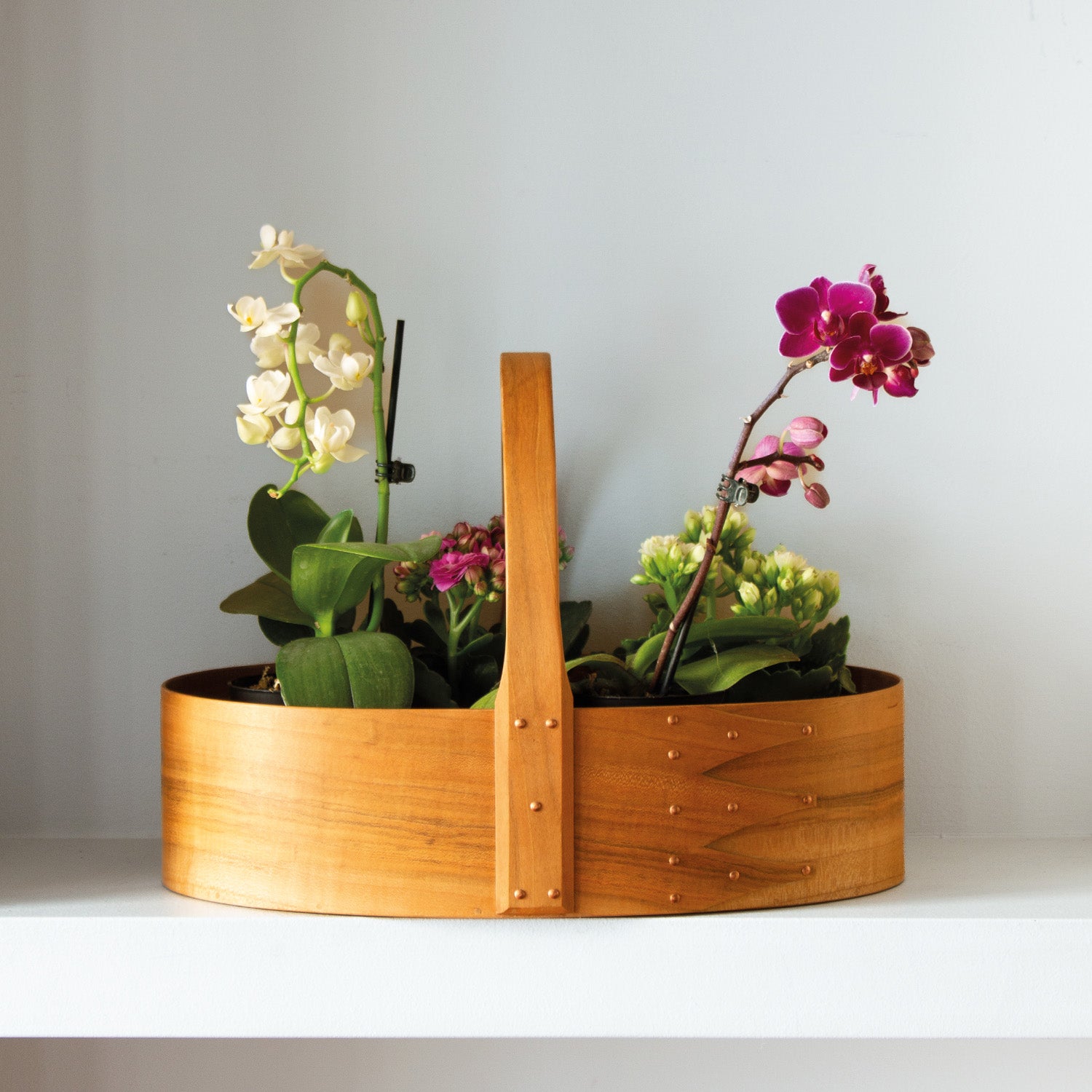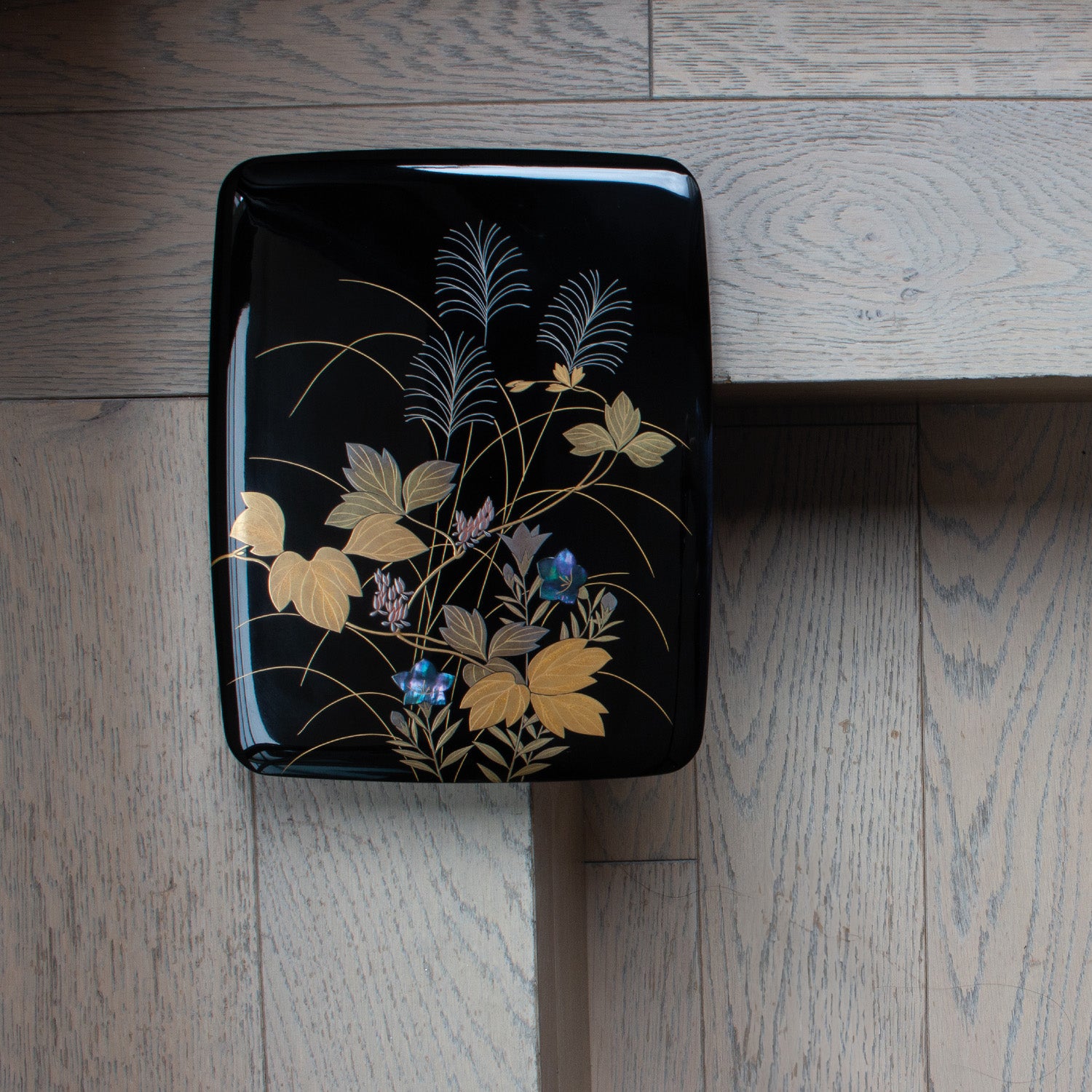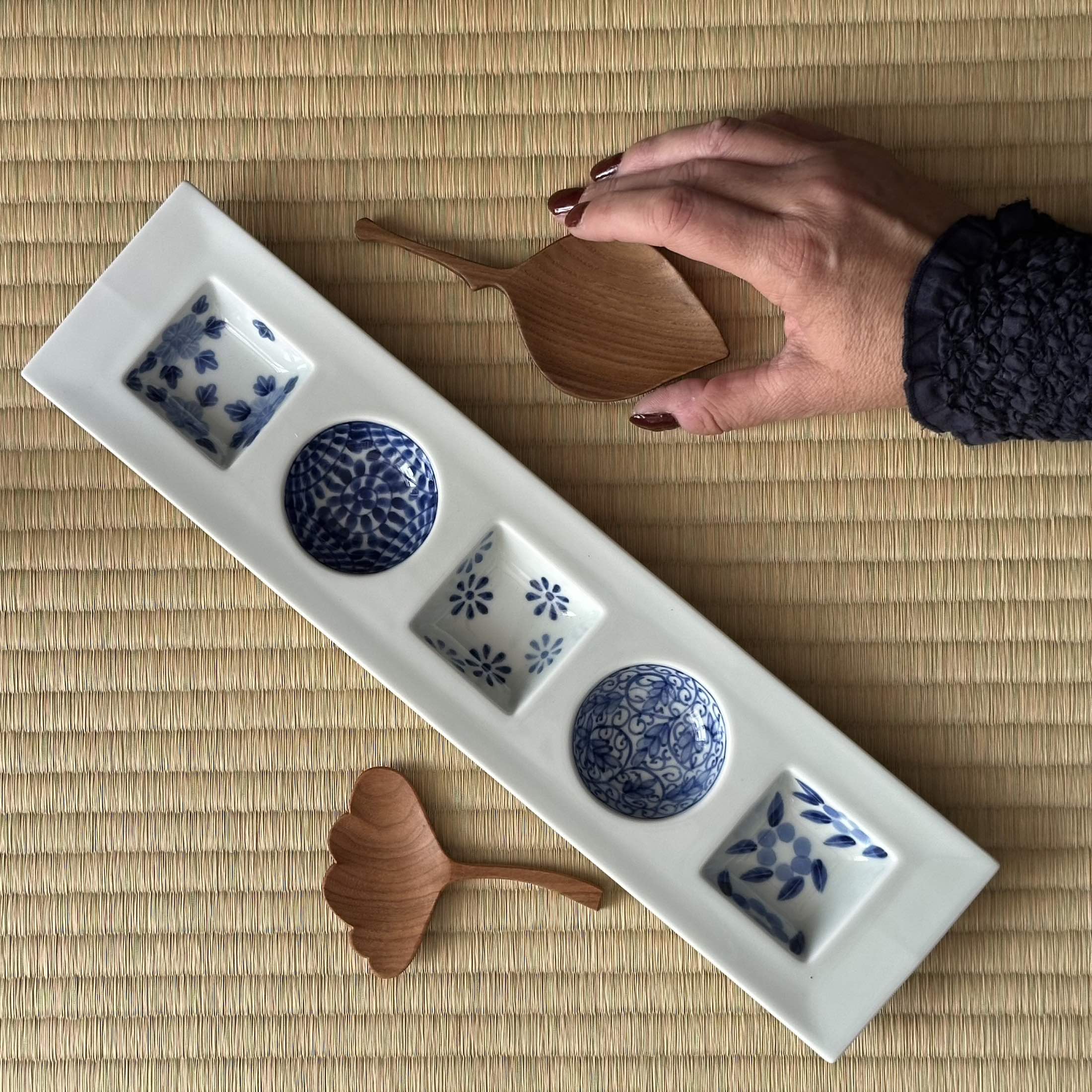
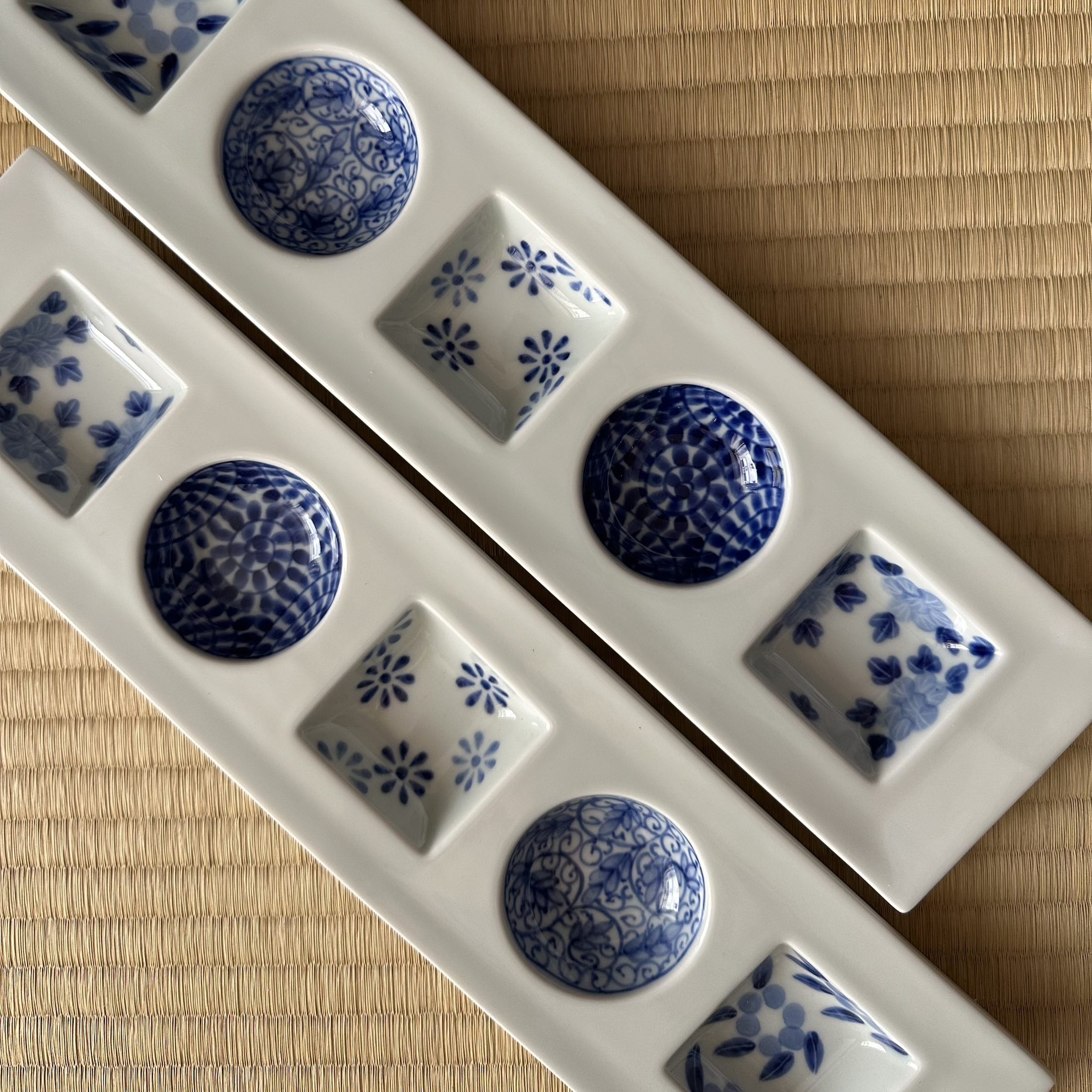
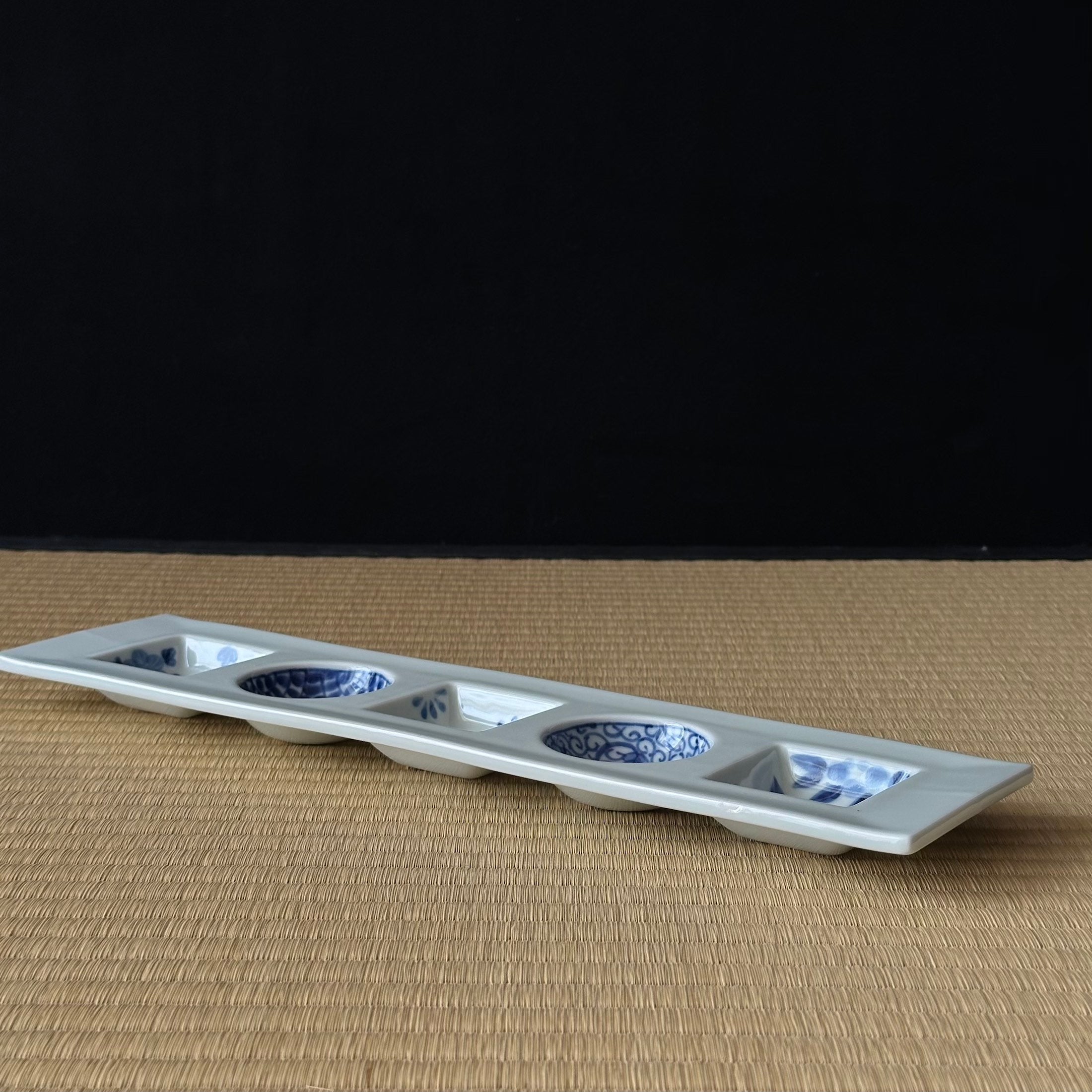
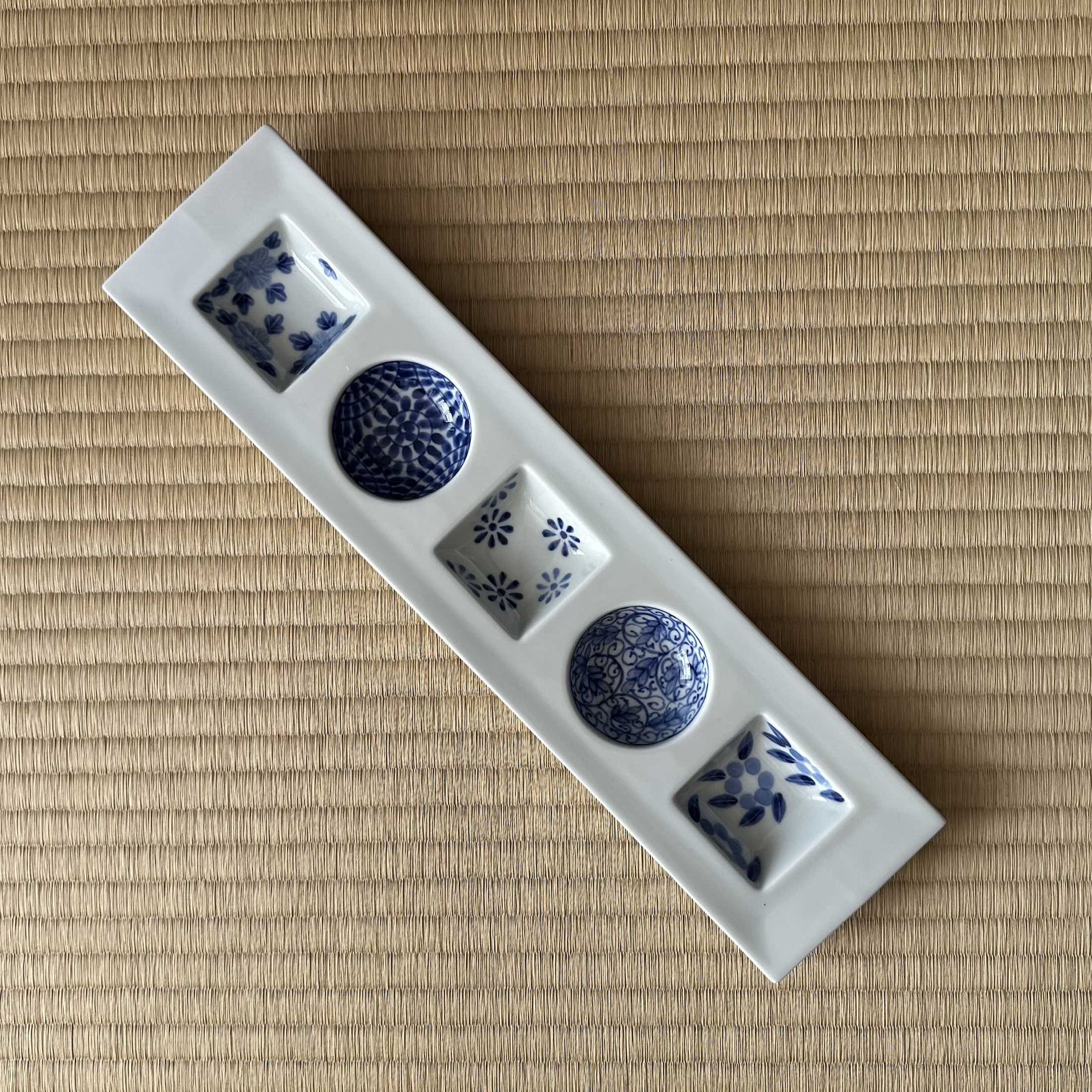
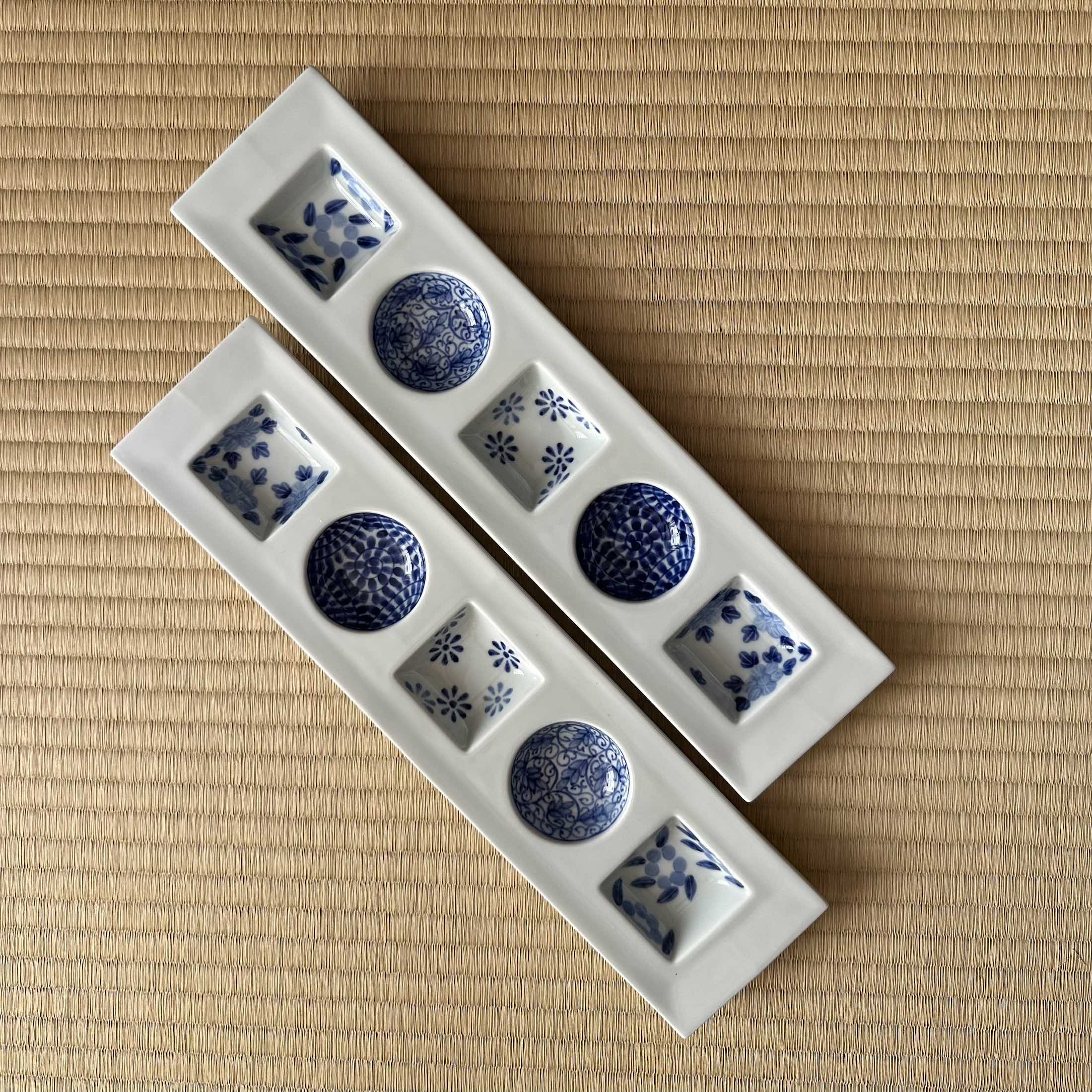
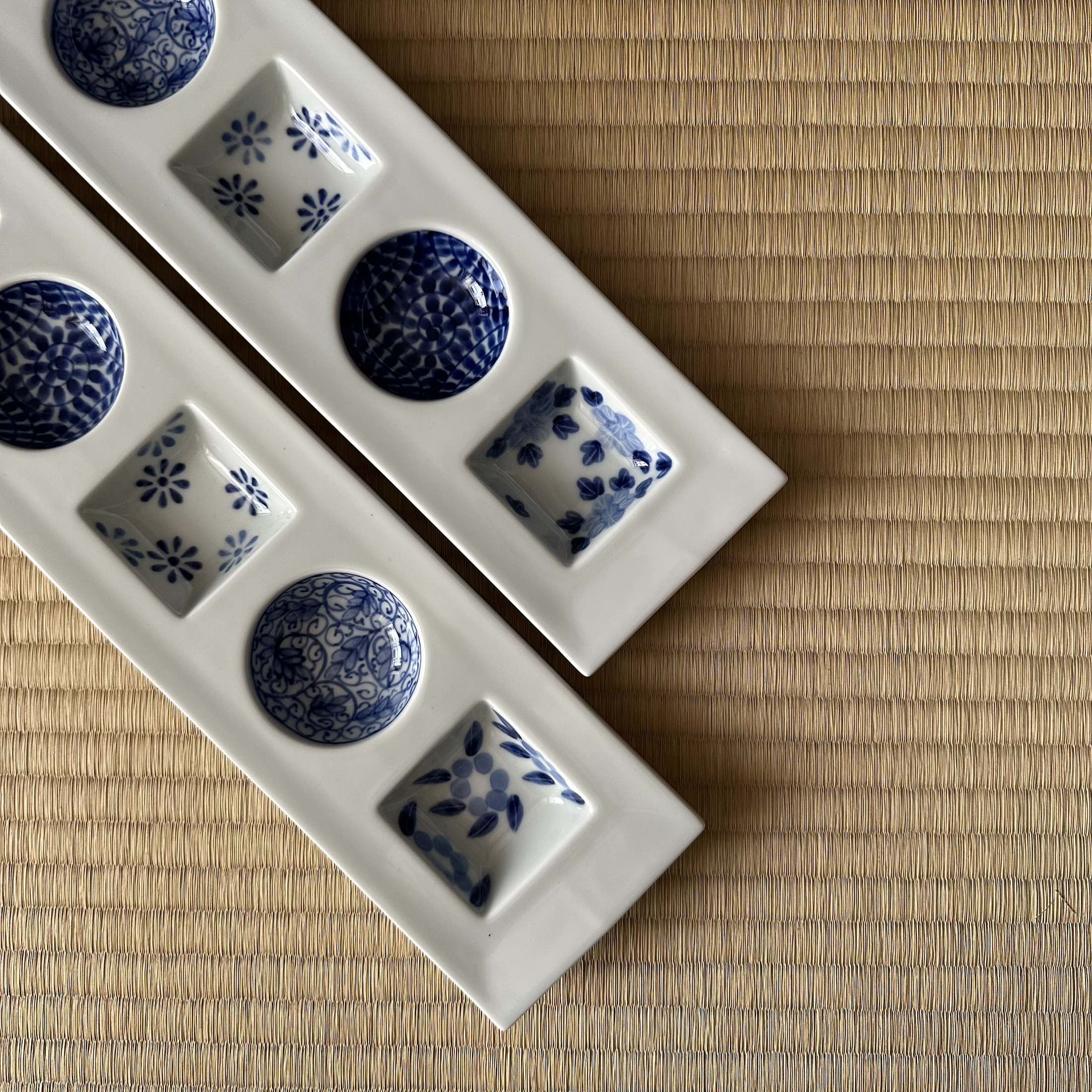
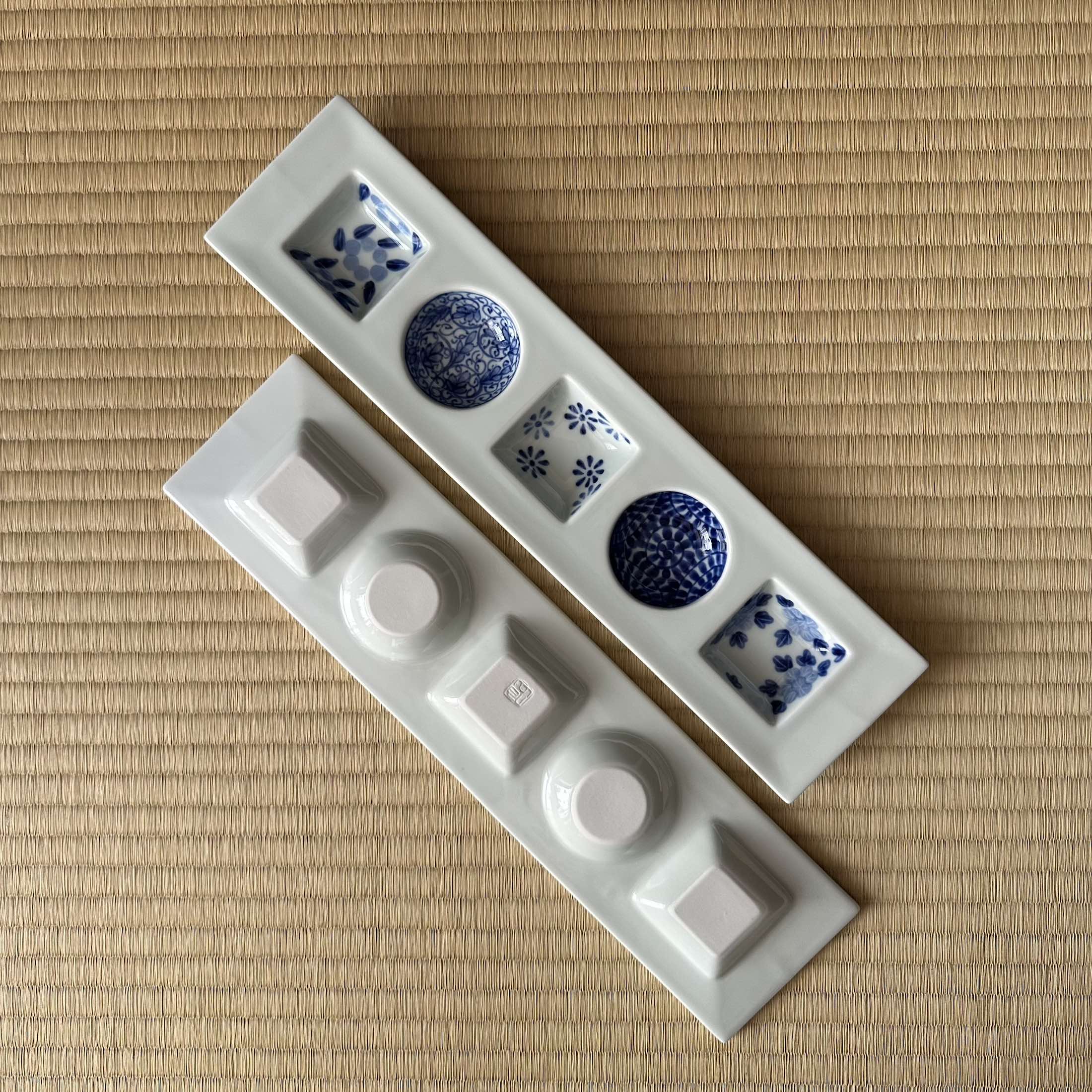
Morizara platter in Arita porcelain from Hakushiyama
This A morizara (server plate) in Japanese Arita porcelain is designed to display small portions (appetizers, for example) or to hold small objects. It is a long platter with five hollows, both round and square, where the deep blue of the sometsuke (cobalt blue decoration) contrasts with the whiteness of the porcelain. A piece that is both useful and contemplative.
The oven
The Hakushiyama kiln is located in Arita, Saga Prefecture, the historic birthplace of Japanese porcelain. Heir to a know-how passed down locally since the 17th century, this workshop is dedicated to the production of hand-painted porcelain using the sometsuke (underglaze blue) technique. It perpetuates a demanding tradition: that of a fine, light, luminous white porcelain, where the clarity of the blue rests on a perfect mastery of the glaze and the firing. Pieces from the Hakushiyama kiln are distinguished by their formal precision and their consistent quality of execution.
The technique and the decor
Made from Arita porcelain, this morizara tray is decorated by hand before firing using the sometsuke technique ( cobalt blue decoration painted under the glaze). The five compartments are painted with floral and geometric motifs symbolizing harmony and longevity. After high-temperature firing, the transparent glaze fixes the shades of cobalt blue, revealing a smooth and luminous surface.
Practical information
Place
Japan (Arita, Saga Prefecture)
Dimensions
Length 37.1 cm - Width 9 cm - Height 2.2 cm
Weight
534 gr
Materials
Japanese porcelain
Period
Contemporary
Care instructions
After use, drain the water and let it air dry. Avoid abrasive products and wipe with a soft cloth. Suitable for dishwashers, ovens and microwaves.
As each piece is created by hand, slight variations in shape, color or texture may appear compared to the photos, reflecting the unique nature of this artisanal work.
DELIVERY
Delivery
Free delivery in mainland France for purchases over €200. Orders are generally dispatched within 2 working days, except in special cases, as indicated in the banner at the top of the website.
Precious objects are wrapped in a cloth tied according to the precious Korean art of pojagi. Some exceptions apply, particularly if the objects are large. Learn more >
Detailed delivery information is available via this link >
Your invoice will be sent by email
Payment methods
By card (Stripe operator): Visa, MasterCard, Discover, American Express.
Secure card payment with 3D Secure.
By PayPal, Apple Pay, Google Pay and Shop Pay
Returns and exchanges
14 days to change your mind.
Choose options







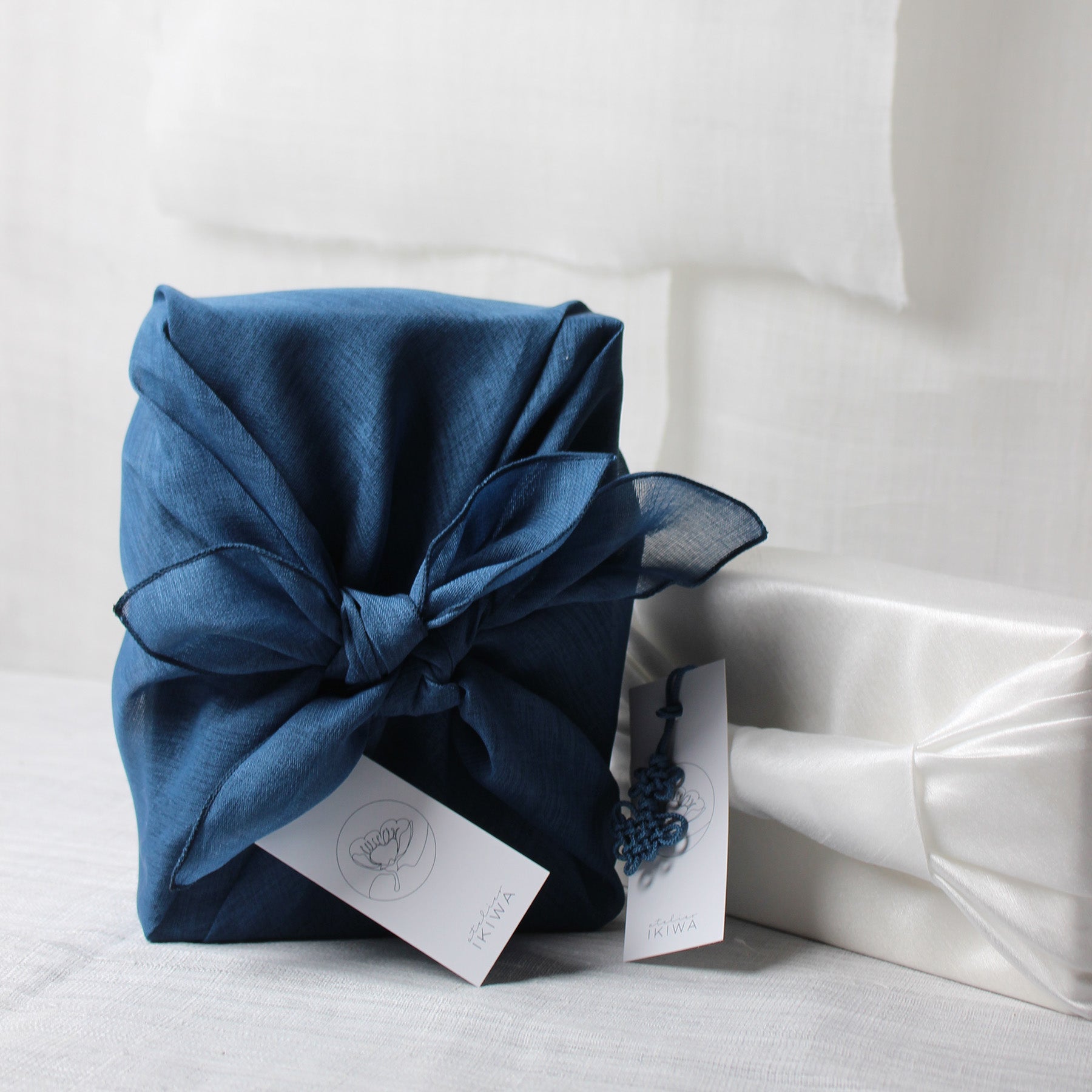
The art of wrapping
The precious objects are wrapped in a beautiful cloth beautifully tied according to the little-known art of Korean pojagi. Details and conditions >


